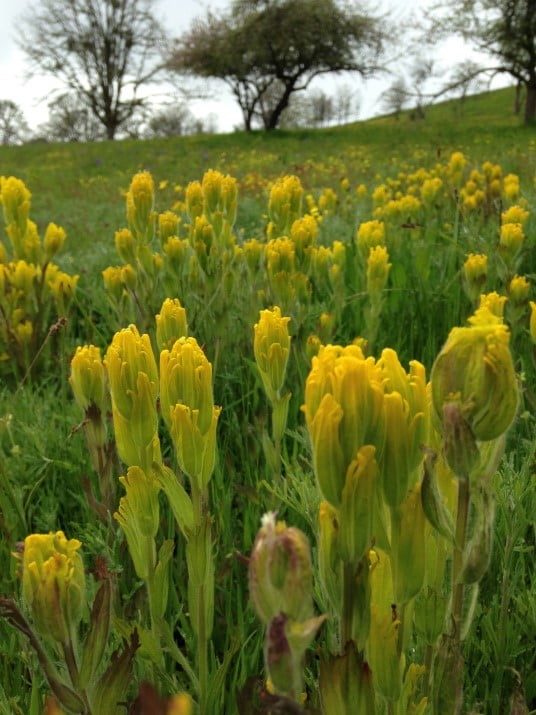
Painting the Prairie – IAE Interns Monitor Golden Paintbrush in the Willamette Valley
by Christina Partipilo and Camille Eckel, IAE 2017 Interns
The Willamette Valley is home to small pockets of native prairie habitats. Among these native prairie species is the threatened golden paintbrush (Castilleja levisecta), a species with glowing golden bracts. This once-abundant prairie wildflower was deemed “nearly impossible to cultivate,” and difficult to grow from seed. Since 2003, IAE has taken on the challenge of researching the biology of this species and restoring it with surprising success. This spring for our internship, we traversed these prairies to help monitor the golden paintbrush and assess its recovery.
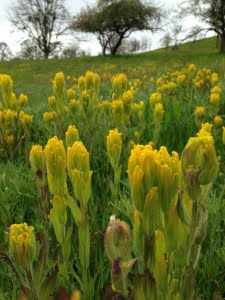
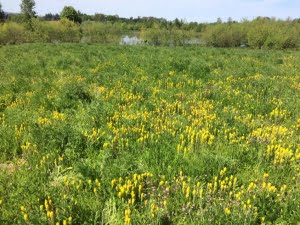
Golden paintbrush is native to western Washington and the Willamette Valley of Oregon. According to the Oregon Department of Agriculture, paintbrush populations flourished in the Willamette Valley, possibly due to fires set by Native Americans. Agriculture and development began to push golden paintbrush out by the late 1930s, and it was listed as threatened since 1997. IAE and other groups have collaborated to reintroduce and restore golden paintbrush to its former range in Oregon and Washington, with support from a US Fish and Wildlife Service Cooperative Recovery Initiative grant and Willamette Habitat Restoration, an Oregon foundation.
Golden paintbrush is a hemi-parasite, meaning it steals nutrients from neighboring plants through modified roots called haustoria. Golden paintbrush is not an obligate parasite, but grows more successfully when it has other plants to parasitize. For this reason, the paintbrush was planted with a mix of other native prairie species including one of its favorite hosts, Oregon sunshine (Eriophyllum lanatum), pictured below.


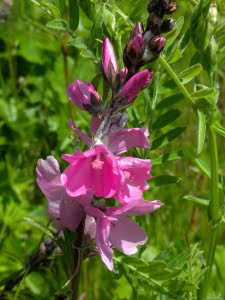
During the 2017 field season, we traveled from as far North as Portland and as far South as Cottage Grove to monitor the success of the reintroduction. We counted over 160,000 golden paintbrush plants throughout the Willamette Valley ecoregion alone.
Howell Savannah, near Portland, contained the largest population in Oregon. With the help of IAE Executive Director Tom Kaye and US Fish and Wildlife personnel, we estimated a population of over 44,000 flowering plants on Sauvie Island alone. These 44,000 plants were in an area of just 4,000 m2 and the plants were so dense, it was impossible to monitor without stepping on some of them!
Monitoring at Howell Savannah involved laying transects across the meadow and counting flowers along the transects. After doing about 15 transects, we had enough information to estimate the population size without actually counting every plant; a relief for the interns, as counting all 44,000 plants would take several days.
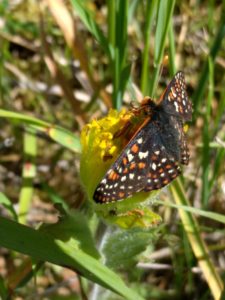
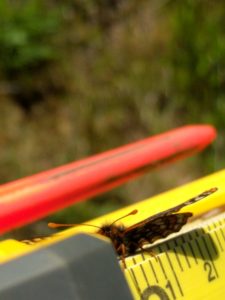

One of the most memorable sites of the field season was the Beazell Memorial Forest west of Corvallis, Oregon. Nestled into the Coast Range, Beazell Memorial Forest overlooks the Willamette valley. Atop one of the peaks, golden paintbrush dots the hillside along with many other natives. This site is home to another endangered species, the Taylor’s Checkerspot Butterfly. We were thrilled to watch them flutter around the meadows, landing on us, our measuring tapes, and laying eggs on golden paintbrush.
Not every site was as enchanting as Beazell, however. This season, we had to deal with equipment breakdowns, missing plot markers, and poison oak. We took each challenge in stride and did our best to handle them with creativity, resourcefulness, and grace. The successes of our internship far outweighed setbacks, and we thoroughly enjoyed our first season in the field. We would like to thank Isaac Sandlin and Tom Kaye for their mentorship this season.
Citations:
Oregon Department of Agriculture. Golden paintbrush (Castilleja levisecta). (PDF). http://www.oregon.gov/ODA/shared/Documents/Publications/PlantConservation/CastillejaLevisectaProfile.pdf
Restoration
Research
Education
Contact
Main Office:
4950 SW Hout Street
Corvallis, OR 97333-9598
541-753-3099
info@appliedeco.org
Southwest Office:
1202 Parkway Dr. Suite B
Santa Fe, NM 87507
(505) 490-4910
swprogram@appliedeco.org
© 2025 Institute for Applied Ecology | Privacy Policy
